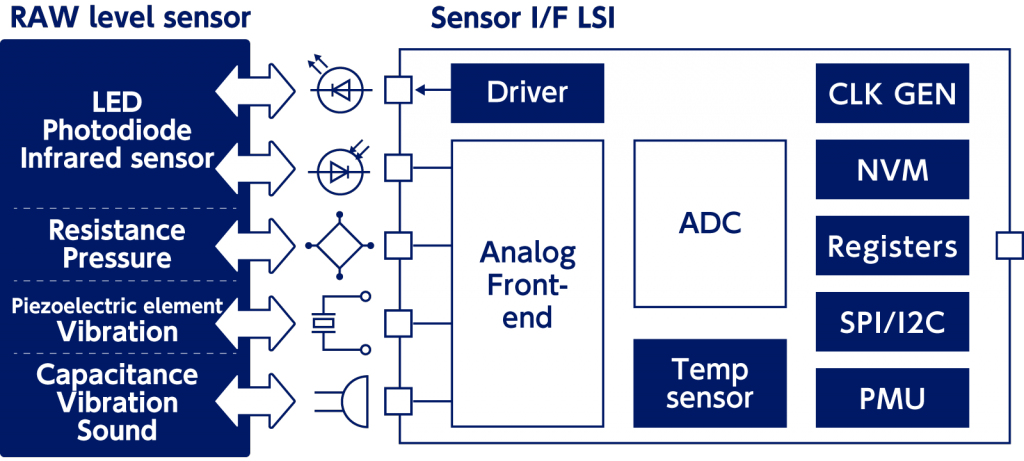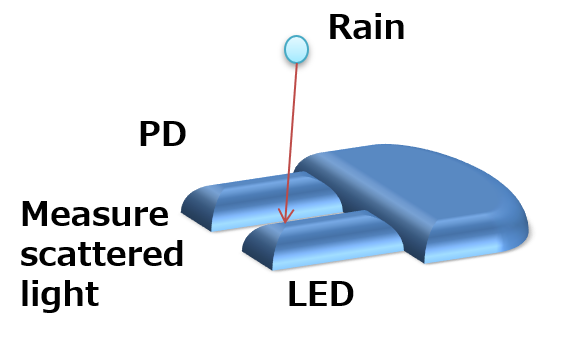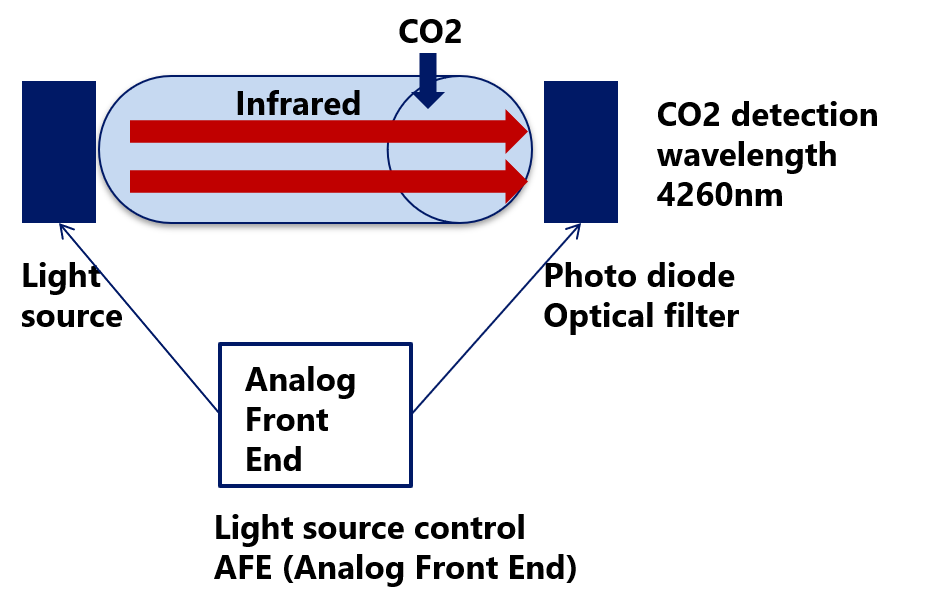Possibility of IoT application of optical sensing

The Sensor AFE LSI under development at Tele-Sentient includes AFE that can configure optical sensing.

By changing the LED and photodiode parts that matches the substance to be measured, it is possible to construct an optical sensor.
What kind of substances can be sensed by optical sensors?
Here is a brief example.
Moisture sensor
Water absorbs light at 1450 nm.
You can apply this principle to build a moisture sensor.
There are many sensors that need to measure water content, such as agriculture, disaster prevention, and deterioration diagnosis.
Rainfall sensor
There is a rainfall sensor that irradiates infrared rays from LEDs and measures scattered light of solids, liquids, and precipitation with a light receiving element.

It is said that the cost can be reduced and the maintainability can be improved compared to the mechanical type.
Rainfall sensors have many needs for agriculture, sediment-related disaster prevention, disaster prevention applications, etc.
CO2 sensor

As shown in above figure, CO2 absorbs infrared rays at 4260 nm, so this principle allows us to build a CO2 sensor.
This is called the NDIR method.
Measurement of photosynthetic activity
There is an index called Normalized Difference Vegetation Index (NDVI) as an index of photosynthetic activity of plants.
NDVI = (IR – R) / (IR + R)
IR is the wavelength of near infrared light and R is the wavelength of red light of visible light.
The leaves of the plant absorb blue around 450 nm and red around 650 nm.
On the contrary, the wavelength of near infrared rays is greatly reflected.
This property can be applied to measure the activity of leaf photosynthesis using near-infrared and visible light.
Measurement of substances with an optical sensor
In this way, various sensors can be constructed by optical sensing including the infrared region.
Molecules are vibrating, and since the vibration is different for each molecule, it absorbs or reflects depending on the wavelength of infrared rays corresponding to the vibration.
Various sensors are made by applying the principle.
Optical sensors play an important role in sensing in the IoT.
- The land-based shrimp farming initiative in Nakacho, Tokushima, was broadcast on NHK Tokushima
- The news of “A Land-based Aquaculture Monitoring System” introduction to Naka, Tokushima is released on PR TIMES.
- Our IoT system was delivered for a new “land-based shrimp farming” business in Naka Town, Tokushima
- Introduction of our new service: IoT proposal for office environment improvement
- Corona measures: 3 Dense avoidance and ventilation promotion! Developed multi-point CO2 concentration measurement and remote monitoring system in IoT
- SAFE Technology Overview (3)
- SAFE Technology Overview (2)
- SAFE Technology Overview (1)
- Agent Based Modeling Technology (5)
- Agent Based Modeling Technology (4)
- Agent Based Modeling Technology (3)
- Lecture on autonomous IoT initiatives utilizing CO2 sensors
- Agent Based Modeling Technology (2)
- Exhibited IoT solutions for hot bath facilities
- Measuring CO2 concentration in an office conference room
